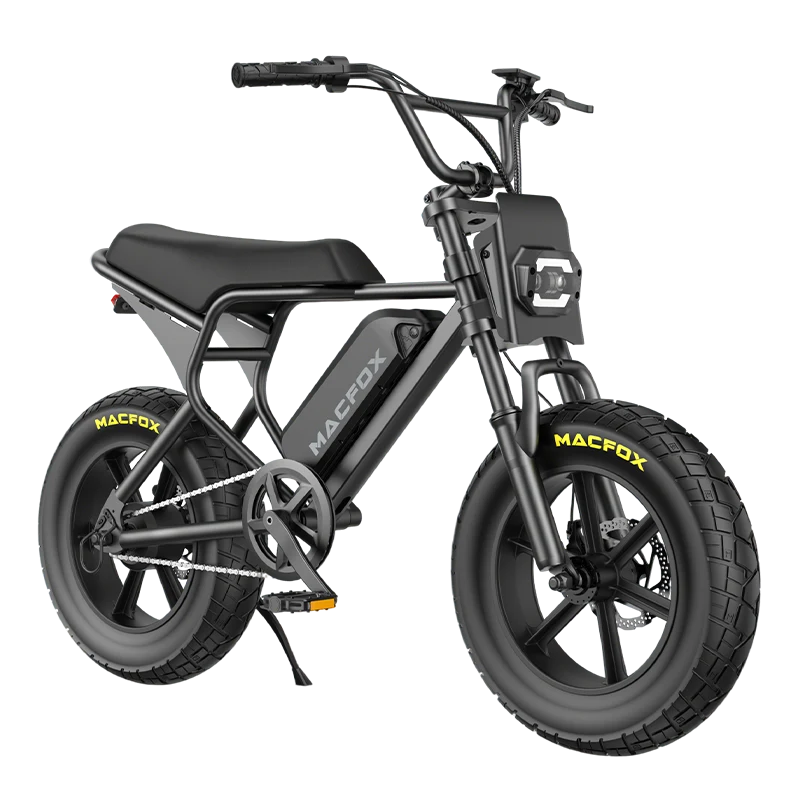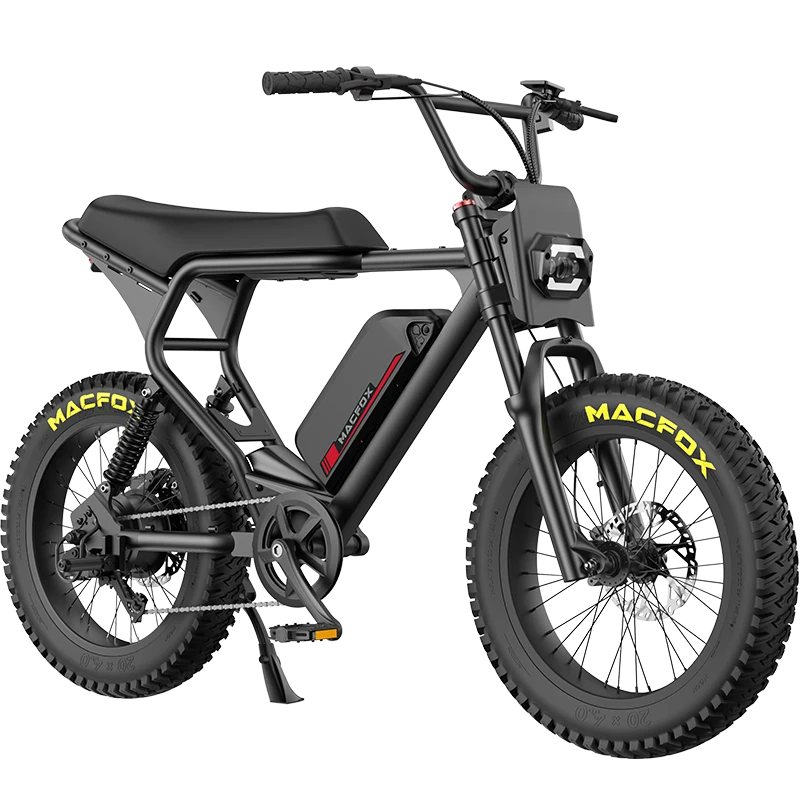Adjusting your bike seat height is more than just a comfort feature. It's a crucial step towards enhancing your riding performance and safeguarding yourself from potential injuries.
Adjusting your bike seat to the appropriate height is not just about increasing pedaling efficiency and covering more ground-it's about doing so comfortably, without stressing out your knees or hips.
This comfort and performance boost should motivate you to follow the instructions in this guide.
This guide offers step-by-step instructions for accurately adjusting bike seat height.
Don't worry, it's not as complicated as it may seem.
It is suitable for riders at all levels, from beginners to more experienced cyclists, so you can feel confident in your ability to make this adjustment.
By the time you finish reading this guide, you will not only understand the value of having an optimally adjusted bike seat, but you will also feel empowered with the knowledge to make these modifications yourself, taking control of your riding experience.
Understand Bicycle Ergonomics
Your bike's ergonomics are not just about performance, they are about creating an enjoyable riding experience. A properly adjusted seat height can significantly enhance your comfort, making your rides more enjoyable and less strenuous on your body.
Ergonomics in cycling refers to how your body interacts with your bike. Proper seat height is integral to this relationship, impacting everything from comfort to pedaling efficiency.
At its essence, optimal seat height allows a slight bend in the knee when pedaling at its lowest point, optimizing power while minimizing fatigue and strain. This means you can pedal more efficiently, maintain a higher speed, and ride for longer distances without feeling as tired.
Principles of Bike Fit:
-
Leg Extension: Proper seat height should allow your knees to bend by 25 to 30 degrees at the lowest point of pedal stroke for increased safety and mechanical efficiency. This position helps reduce the risk of injury while simultaneously improving mechanical efficiency.
-
Hip Position: When pedaling, your hips should remain stationary on the seat; otherwise, it may indicate that the seat height has been set too high, which causes overextension of the pedal stroke at its core.
-
Position Your Feet Properly: For optimal pedaling power transmission, position both balls of your feet over the pedal shaft for maximum efficiency when pedaling.
Understanding ergonomic principles is the foundation of creating a comfortable and efficient riding position.
With our fundamental understanding, we can now discuss the necessary tools and steps for properly adjusting bike seat height.
Tools Needed for Seat Adjustment
To successfully and safely adjust the seat height on your bike, having the appropriate tools is vital. Here is a breakdown of what will be necessary:
Essential Tools:
- Allen Keys or Hex Wrench Set: Most bikes require Allen keys to adjust the seat height. These come in various sizes, and it's best to have a complete set.
- Adjustable Wrench: For bikes with bolted seat clamps, an adjustable wrench is necessary.
- Tape Measure: To measure the seat height from the bottom bracket to the top of the seat.
- Torque Wrench (optional but recommended): To ensure that bolts are tightened to the manufacturer's specifications, preventing over-tightening.
Prepare your workspace by clearing a stable, flat surface and laying out these tools.
A clean, organized workspace will make the adjustment process smoother and safer.
Related Reading: How to Buy the Right Bike
Detailed Step-by-Step Seat Height Adjustment
Adjusting your bike seat properly is crucial for comfort and performance. Here’s how to accurately adjust the seat height:
-
Measure Current Seat Height:
- Use the tape measure to record the distance from the center of the bottom bracket to the top of the seat along the seat tube.
- For instance, the Macfox X2 mountain electric bike has a specified seat height of 64.5 inches from the factory.
-
Determine the Ideal Seat Height:
- The general rule for road bikes is that the seat height should be 109% of your inseam. Measure your inseam from the floor to your crotch and multiply by 1.09.
- For mountain bikes like the Macfox X2, you might consider subtracting 1-2 cm from this measurement for better control in rough terrain, especially given the bike's initial setting.
-
Loosen the Seat Clamp:
- Use the appropriate Allen key or wrench to loosen the bolt on the seat clamp. Be careful not to remove the bolt completely.
-
Adjust the Seat Height:
- If the preset height of 64.5 inches on the Macfox X2 does not align with your optimal seat height, adjust accordingly. Raise or lower the seat to meet the ideal height calculated.
- Ensure the seat post remains above the minimum insertion mark to maintain structural integrity and safety.
-
Tighten the Seat Clamp:
- Once the seat is at the correct height, re-tighten the bolt. If using a torque wrench, tighten to the manufacturer's recommended settings to avoid damage.
-
Check Alignment and Comfort:
- Sit on the bike in a riding position and place your heel on the pedal. At the bottom of the pedal stroke, your leg should be fully extended without having to rock your hips.
- Make minor adjustments if needed until the seat height feels comfortable and you can pedal efficiently without straining your knees.
Additional Adjustments for Optimized Riding Comfort
Beyond seat height, consider these adjustments to fine-tune your bike fit:
- Seat Tilt: The seat should generally be level, but slight adjustments can be made based on personal comfort. A forward tilt can reduce pressure on soft tissues; a backward tilt can help with climbing.
- Fore and Aft Position: Adjust the seat forward or backward so that when the pedal is at 3 o'clock, your knee cap is directly above the pedal axle. This position ensures optimal power transfer and reduces strain on the knees.
Common Mistakes to Avoid
Ensure a safe and effective adjustment by avoiding these common mistakes:
- Over-tightening Bolts: Can lead to stripped threads or broken components. Use a torque wrench to avoid this.
- Ignoring Signs of Wear: Regularly inspect the seat post and saddle for signs of wear and replace if necessary.
- Skipping Post-Adjustment Testing: Always take a short test ride to check the comfort and adjust further if needed.
Conclusion
Proper bike seat adjustment is vital to both comfort and performance enhancement.
Following these detailed steps and using appropriate tools ensures your bike fits comfortably and supports your riding goals.
FAQs
What tools do I need to adjust my bike seat height?
You'll need Allen keys, a wrench, and a tape measure to accurately adjust your bike seat height.
How do I find the ideal seat height for my bike?
Measure your inseam and adjust the seat height to be about 109% of that length for road bikes, slightly less for mountain bikes for better control.
How often should I check and adjust my bike seat?
Regular checks are recommended, especially after long rides or if you notice changes in riding comfort or performance.



















1 thought on “The Complete Guide to Bike Seat Height Adjustment”
Jacob
Can you please please make a video on how to lower the seat height.i don’t understand.